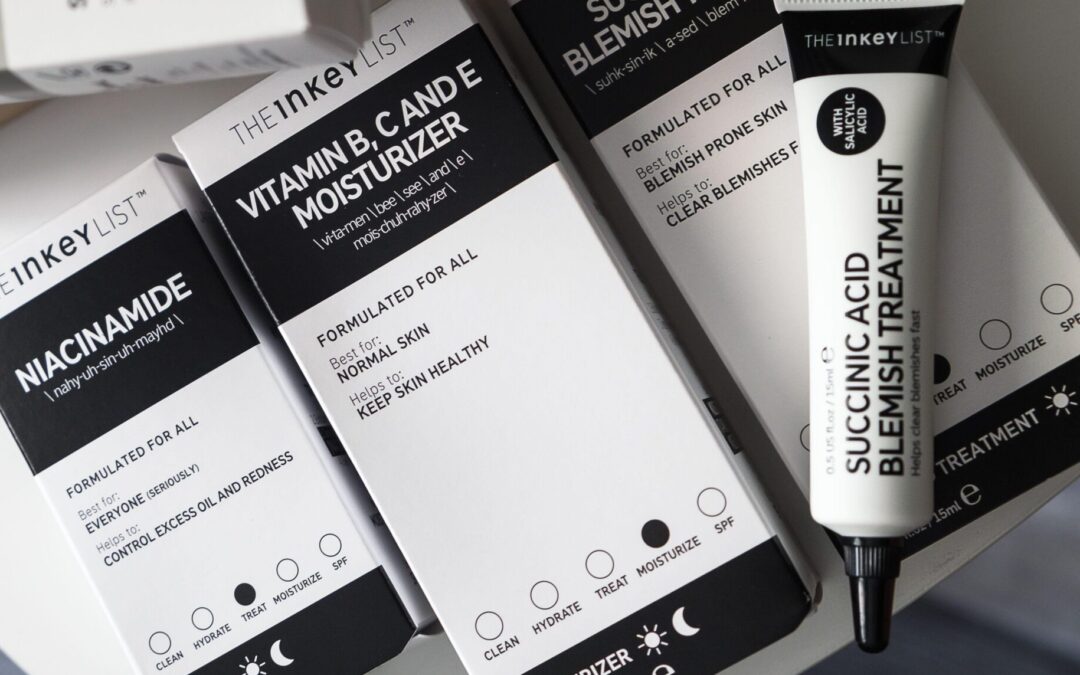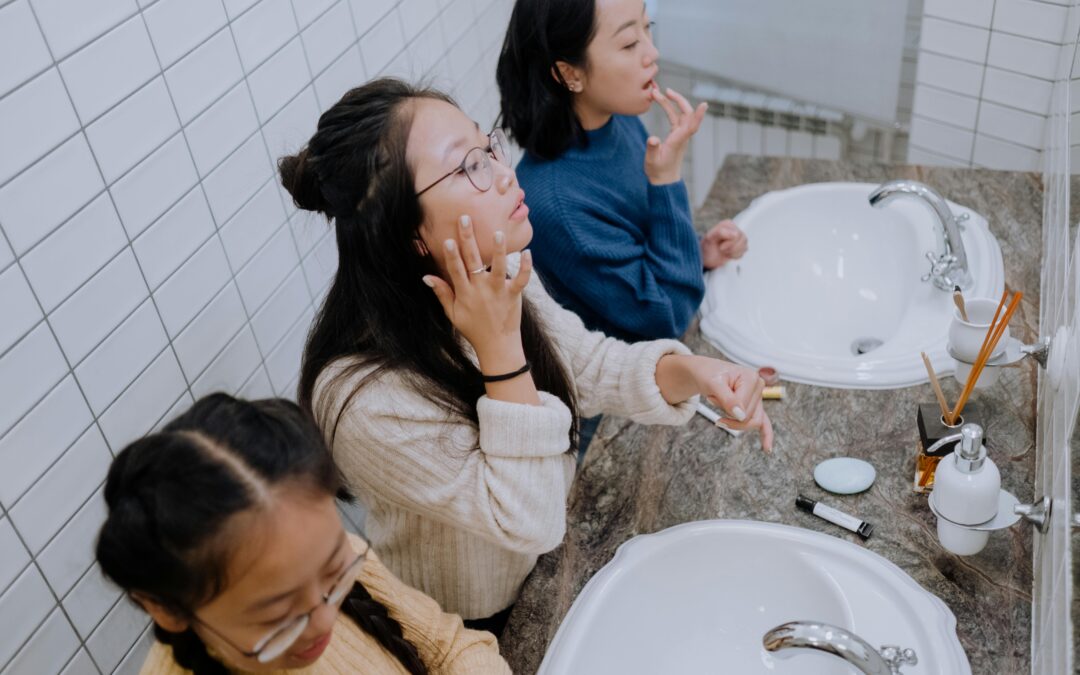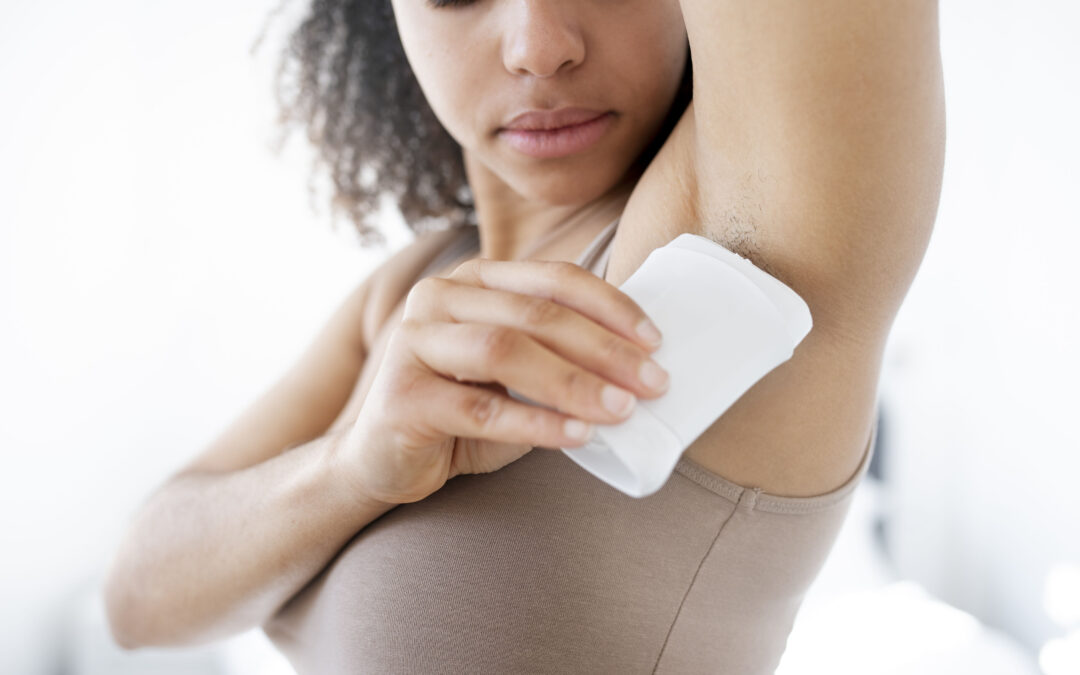At Radiance, we’ve always prided ourselves on having a global perspective on skincare—from local remedies to cutting-edge international products. But when we began exploring South Asian skincare, we quickly realized how little we truly knew.
Dr. Monisha Madhumita, a consultant dermatologist who works primarily with individuals with skin of colour, describes South Asian skincare as deeply rooted in tradition, history, and holistic health. “If I were to start describing what South Asian skincare is, it would probably take all night,” she says. “The history is centuries old. It’s intertwined with cultural traditions, ancient systems of medicine like Ayurveda, and is deeply woven into everyday life.”
A Tradition Passed Down, Not Packaged
“If I were to describe South Asian skincare,” says Dr. Monisha Madhumita, a consultant dermatologist who works primarily with skin of colour, “it would probably take all night.”
That’s because this approach to skincare isn’t built around products sold in stores. It’s built around centuries-old traditions, shaped by systems of medicine like Ayurveda, and maintained in households through generations of cultural wisdom.
“It’s so deeply intertwined with everyday life,” she explains. “It’s not something that was just created for the beauty aisle.”
Instead of serums and synthetics, South Asian skincare begins with ingredients like turmeric, sandalwood, rose water, and fuller’s earth (multani mitti)—items you’re just as likely to find in the kitchen as in a beauty cabinet. These ingredients don’t just treat the skin—they represent balance, healing, and connection to nature.
A Skin Type Often Overlooked
The needs of South Asian skin are specific, and often misunderstood by Western skincare brands. Hyperpigmentation, acne, acne scars, and pseudofolliculitis barbae (razor bumps) are common concerns due to the higher melanin content in the skin and a tendency toward sensitivity.
For Aditi Narayanan, a 21-year-old student originally from India and now living in Hertfordshire, the experience is deeply personal.
“I struggle with hyperpigmentation—some parts of my face are darker than others,” she shares. “It used to affect my confidence, especially if I hadn’t slept well. But now, I’ve accepted that it’s just how my skin is.”
Dr. Madhumita hears this often. “Hyperpigmentation is one of the most common concerns among South Asian patients,” she says. “But most mainstream skincare products are designed for lighter skin tones. They don’t take melanin-rich skin into account—especially when it comes to things like inflammation, undertones, and scarring.”
Read more about Eileen Uthuppan’s Ichthyosis Story: https://radiancemag.co.uk/2025/06/03/my-rare-skin-condition-helped-me-find-purpose-eileens-ichthyosis-story/
Why Isn’t South Asian Skincare a Global Trend?
Despite its effectiveness, South Asian skincare hasn’t captured the global imagination the way Korean or Japanese skincare has. There are several reasons for this, and marketing is a major one.
“Korean beauty, for example, found a gap in the market,” says Dr. Madhumita. “They showed that skincare could be self-love, self-pampering. With cute packaging and ten-step routines, they made it aspirational.”
South Asian skincare, by contrast, has been quietly passed from generation to generation—shared in stories, taught in family rituals, and seldom formalized into brands. Its familiarity within the culture has ironically made it feel ‘too traditional’ to be modernized or commercialized.
“There’s also the issue of perception,” she adds. “Take turmeric. In South Asia, it’s a sacred, medicinal plant. But globally, it’s often reduced to a trend—turmeric lattes or yellow face masks—without any understanding of the context.”
This disconnect between cultural meaning and global consumption can even lead to cultural appropriation, where the ingredient is stripped of its original philosophy and repackaged for profit.
The Representation Gap in Beauty
Another reason South Asian skincare hasn’t gained traction? Lack of representation.
“I often feel like I’m not the target audience,” says Aditi. “When I shop for makeup or skincare, I struggle to find foundation shades that match my undertones, or products that address oily skin and pigmentation together.”
And it’s not just about the products—it’s about the people selling them.
“We rarely see South Asian models or influencers in skincare marketing,” says Dr. Madhumita. “When Bridgerton came out, it was a turning point. For the first time, we saw a South Asian woman as a romantic lead. It made people pause and say, ‘Wait—why haven’t I seen someone like me before?’”
That kind of visibility matters. It challenges long-held beauty standards and validates diverse experiences with skincare.
“Representation helps you feel seen,” Aditi adds. “It gives you a reference point. It shows you that your skin tone, your features, your textures—they’re normal, even beautiful.”
More Than Skin Deep
As our conversations continued, one thing became clear: South Asian skincare is about more than treating the skin—it’s about nurturing the self.
“Doing my makeup and skincare in the morning helps me feel more confident and prepared for the day,” says Aditi. “It’s not about covering flaws. It’s about showing up for myself.”
Science is beginning to catch up with this idea. Dr. Madhumita points out that skin and brain cells share a developmental origin. “There’s increasing evidence that what we apply to our skin can influence our mood,” she says. “Certain ingredients are even being studied for their impact on emotional wellbeing.”
This aligns perfectly with Ayurvedic principles, where health is viewed as a state of balance between body, mind, and environment.
“South Asian skincare isn’t about perfection,” she says. “It’s about prevention, alignment with nature, and acceptance. That fits beautifully with today’s wellness movement, where we’re starting to see health as holistic—not just the absence of disease.”

What Needs to Change?
If South Asian skincare is going to take its rightful place on the global beauty stage, a few things need to happen.
1. Scientific validation.
Traditional ingredients need to be studied and supported by modern research to build credibility without stripping them of cultural context.
2. Culturally respectful branding.
Brands should honor the origins of the rituals they borrow from, rather than rebranding them for trendiness.
3. Inclusive representation.
More South Asian faces in skincare campaigns, more products tailored to melanin-rich skin, and more influencers sharing authentic stories.
4. Reframing tradition.
We must stop seeing tradition as outdated. As Dr. Madhumita puts it, “Calling it ‘traditional’ isn’t enough. These practices work. They deserve to be part of the modern wellness conversation.”
South Asian skincare isn’t just about glowing skin. It’s about centuries of knowledge, passed lovingly through generations. It’s about rituals that connect you to your roots. It’s about balance, healing, and acceptance.
In a world that is finally waking up to the importance of diversity and inclusivity in beauty, it’s time to shine a light on these traditions not as exotic trends, but as meaningful, powerful systems of care.
At Radiance, we’re humbled to keep learning and to share stories that make beauty a little broader, deeper, and more representative of the world we live in. underrepresented.
“South Asian skincare is passed down as cultural knowledge,” Dr. Madhumita explains. “It hasn’t been globalized or standardized. Many of these ingredients may seem unfamiliar to those outside the culture. For instance, turmeric is well known in cooking, but its skincare benefits aren’t as widely understood.”
She also points out the strategic success of K-beauty: “Korean skincare marketed itself as a form of self-care—through cute packaging, 10-step routines, and a focus on pampering. That made it relatable and aspirational.” South Asian skincare, in contrast, hasn’t had a global marketing platform or the same kind of repackaging.
Representation Still Lags Behind
Ms. Narayanan also highlights another challenge: lack of representation. “South Asians are often underrepresented in the skincare and beauty industry—especially when it comes to foundation or concealer shades,” she says. “Products often cater to concerns common in white skin, ignoring issues like hyperpigmentation or oily skin common in brown skin.”
Dr. Madhumita echoes this sentiment. “There’s a risk of cultural appropriation when ingredients like turmeric are used without honoring the philosophy behind them. You can’t isolate one part of the tradition and expect the same results. These remedies need to be backed by scientific research and packaged in ways that resonate with today’s consumers while staying true to their roots.”
She also stresses the need for more South Asian influencers and models in skincare marketing. “I remember when Bridgerton was released, and it really shook things up. It made us realize how underrepresented we were in media. Before that, we just accepted that light-skinned, flawless models were the norm. But representation matters—seeing skin like yours makes you feel seen, valued, and normal.”
The Emotional Connection to Skincare
Ms. Narayanan adds that caring for her skin helps her feel confident. “Doing my makeup before uni makes me feel prepared, productive, and more in control. It’s not just about fixing your skin—it’s about self-expression and self-care.”
Dr. Madhumita agrees. “There’s growing interest in skincare that elevates your mood. The skin and brain originate from the same embryonic cells, so what we put on our skin can influence how we feel. South Asian skincare embraces the concept of balance—not perfection. It promotes harmony, self-acceptance, and connection with nature. That aligns with the modern wellness movement.”
She believes it’s time to move beyond seeing these practices as just ‘traditional’ or ‘home remedies’. “They work—and they deserve to be studied, standardized, and shared on a global scale.”
South Asian skincare is more than turmeric face masks or ancient rituals—it’s a philosophy rooted in balance, cultural wisdom, and holistic well-being. As conversations around diversity, representation, and wellness grow louder, so too should the voices of communities whose practices have quietly shaped beauty for generations.
At Radiance, we’re continuing to learn—and we hope this is just the beginning of a deeper, more inclusive skincare conversation.s to foundation and concealer shades etc. Typically, products targeting skin issues will generally target problems common in white skin, and will not take into account things like undertones, hyperpigmentation, oily skin as much.” she says.
Dr Madhumita shares a similar opinion towards representation of South Asians in the world of skincare.” The problem is it’s not been standardized it’s not reviewed that’s to say that it’s not backed by a lot of scientific studies it’s more wisdom that’s been carried from generation to generation and sometimes what happens is there’s also a challenge of cultural appropriation.For example turmeric is taken out of context and then sort of just repackaged. But you can’t just take out one ingredient without sort of absorbing the philosophy of what South Asian skin care really means and what it could mean to your overall sort of health and wellbeing and if I mentioned, at the risk of sounding redundant, I believe that these practices weren’t taken seriously because it’s traditional It’s a home remedy.
“They’ve worked but they need to be backed by studies and then we have to package them and make them innovative in a way that it is still relevant right because calling them as traditional is just not enough. We need to make sure that it stays true to its philosophy but at the same time caters to the needs of individuals when packaged.” She also says that there is a lack of representation of South Asians among influencers and models for skincare as well.
“ I remember when Bridgerton got released and, it really, sort of shook things up and that was when we sort of reflected. I think until then we didn’t even know that there was under representation. We just assumed that it was the norm, seeing light-skinned, perfect, individuals, influencers, people in the media, we just assumed that that’s the norm. And it never really struck that maybe there was a tiny voice inside of us saying, okay, no, people on screen don’t really look like me or, these influencers or models, they don’t look like me. I mean, they just don’t seem very relatable.
“So when that happened, we sort of started asking the question, why am I not being represented on screen or why aren’t my concerns? And that sort of voice became louder. And I really believe that’s very important. We need to be loud and we need to be asking these questions because unless we see brown skin, textured real skin, unless we see it, we’re not going to know that our skin is all right just the way that it is.”
Ms Narayan who has also watched Bridgerton, agrees with the fact that there is underrepresentation of South asian models and influencers in the realm of skincare.”I like being represented in the media, as it helps me gain an understanding of what works well with my skin tone, and what types of clothes and makeup suit me well based on things like undertones, face shapes, etc.”
Ms Narayanan says that she has grown to love her skin and doing skincare, hair care and make up makes her feel more confident. “I just experimented with different products, and looked online, until I found a routine that worked for me, and made me feel better about my skin, made me feel happier with myself.By doing my makeup in the morning to go to uni, it makes me feel more prepared and confident, and in turn makes me more productive. If you care for yourself first, your skin and health will generally improve, and then creating a routine to target more specific issues would be the next step.”
Taking into account what Ms Narayanan said about how loving and taking care of her skin boosts her confidence, we asked Dr Madhumita why this happens She says,” What is gaining a lot of importance right now is skin care that helps elevate your mood right because we’ve seen that the origin of the skin is from the same cells that gives rise to your brain right so we’ve seen skin care when applied to your skin can get absorbed and it in many ways elevate your mood
“South Asian skin care and South Asian health in general is viewed as a state of balance. It emphasizes balance not perfection and it emphasises acceptance and balance and prevention and aligning yourself with the wisdom of nature. So that aligns very very well with the wellness ideology that we’re growing comfortable with because we’ve realized that health cannot be seen in isolation, you can’t talk about one organ health and then sort of neglect the other you’re to be seen as a whole so that’s where I think traditional skin care practices have a role to play now and they should no longer be considered just traditional”




